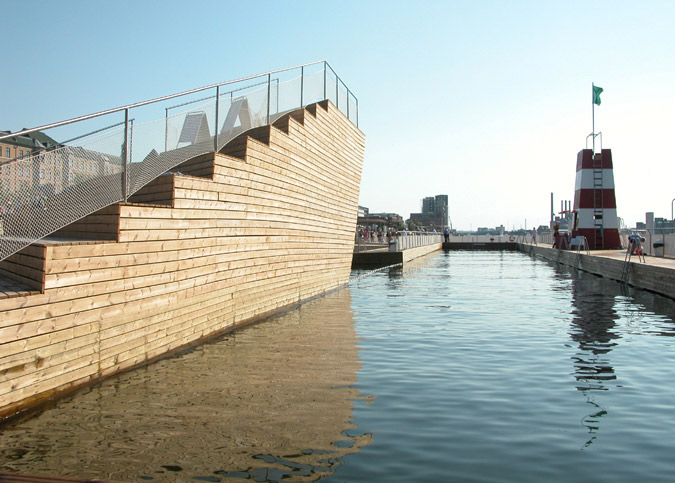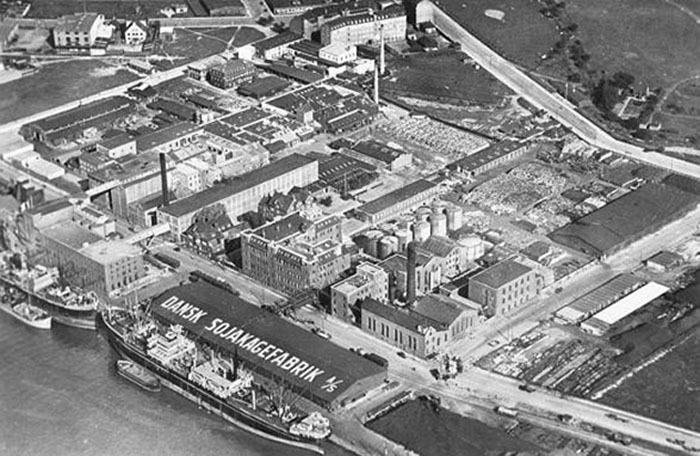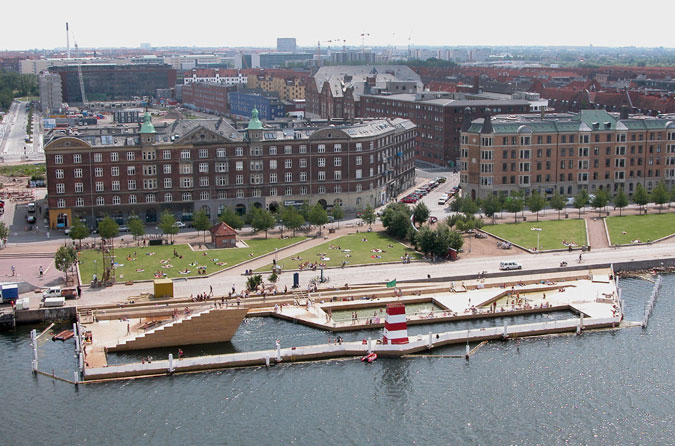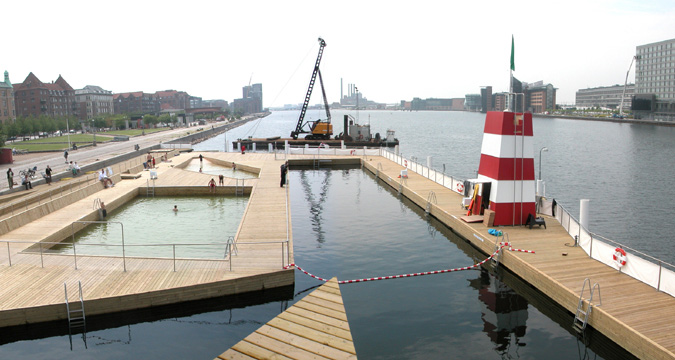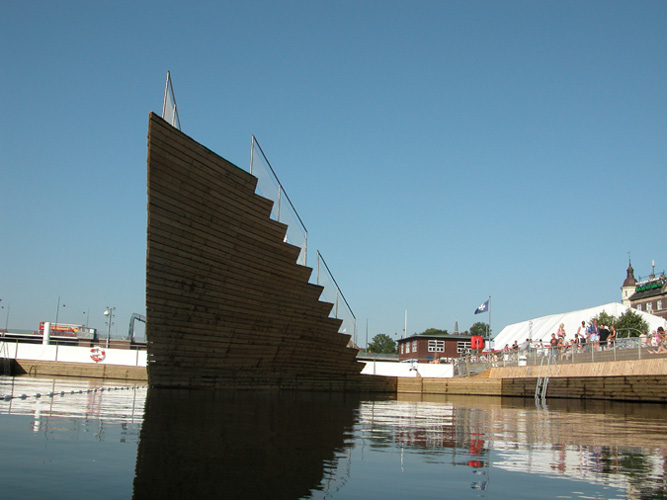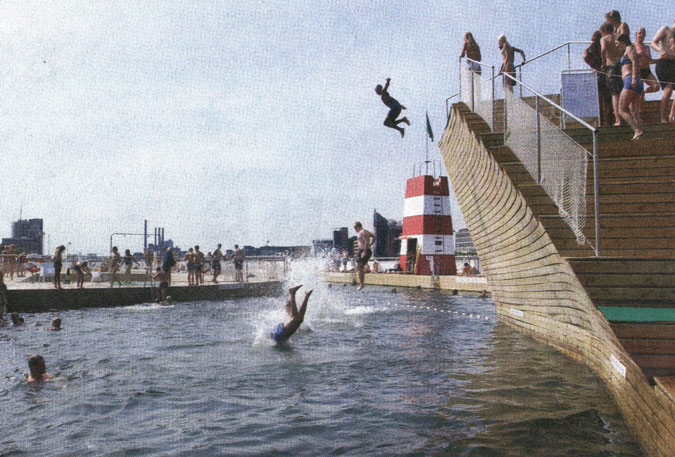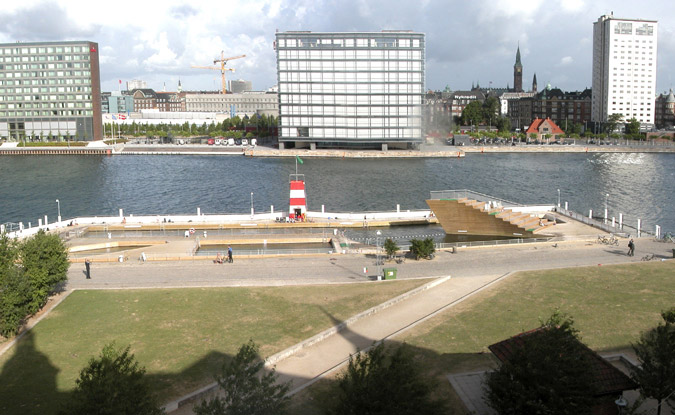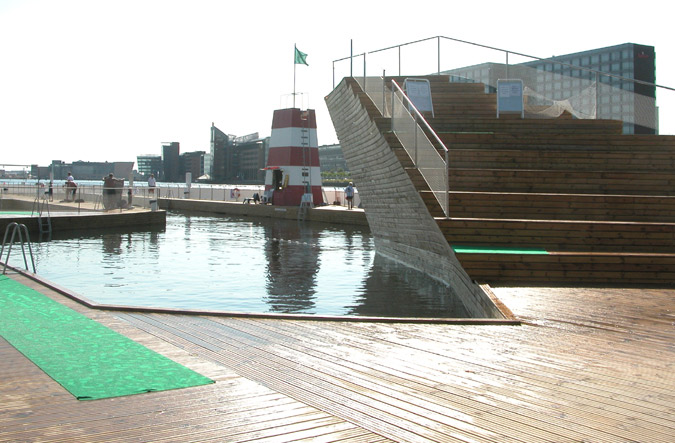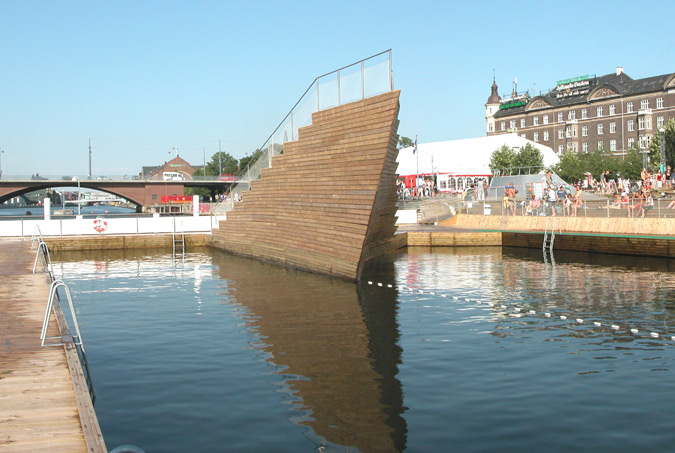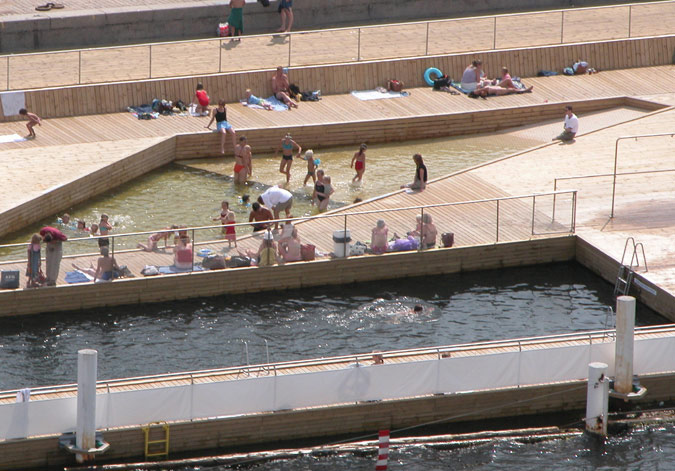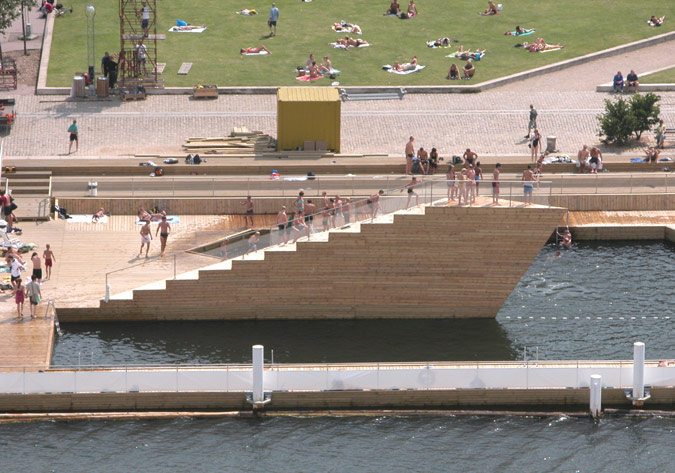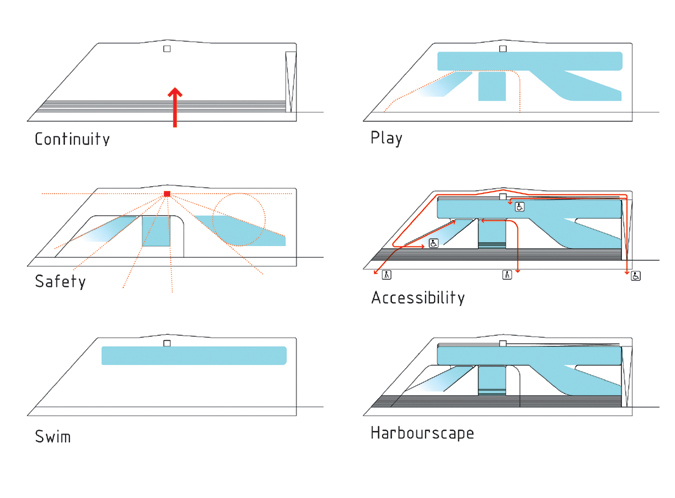Previous state
When it was founded between the 10th and 11th centuries, Copenhagen was simply called Havn, which means 'port' in Danish. With the passage of time, the name was lengthened to ‘Købmandshavn’, or ‘merchants’ port’, and from that the present day København was derived. The city straddles Amager and Zealand Islands, separated by the Grand Canal, the strategic natural port that gives it its name.The Islands Brygge district, north-west of Amager Island, had always lived facing the canal. It had been the site of the busy Rysensteen public baths, closed in 1954 because of the increasing contamination of the water. In the second half of the 20th century, the district was consolidated as a major industrial sector. Between the 1970s and 1980s, it became a marginal, dangerous district with a high crime rate. Recently, though, Islands Brygge has undergone a series of transformations designed to make its industrial and marginal character a thing of the past and turn it into a attractive centre for social and cultural activities. So much so that today it is known as the ‘Manhattan of Copenhagen’ because it has become one of the most expensive districts of the city. Part of its industrial fabric has been replaced by new residential buildings which make up the new district of Havnestaden.
Aim of the intervention
This recent process of transformation has meant that the idea of using the canal water for the baths is no longer rash, but has become an attractive possibility. Suddenly Copenhagen has a fantastic opportunity to jump into the water and enjoy the views of the towers of the city. In the same place where the old Rysensteen baths were over fifty years ago, today there is a public space that bears witness to its determination to open up to the canal. This is the Havneparken, or 'port park', formed by three large grass parterres which, like a beach, stretch along 250 metres of the south bank between the Langebro bridge and the new Bryggebroen moveable footbridge.In 2003 the town council promoted the construction of the Havnebadet, or ‘port baths’, with the intention of extending the park over the water and providing bathers with conditions of good access, salubrity and safety. The aim of the new facility, which was inaugurated the same year, is to go beyond the uses of a mere sports venue and become a public space for social interchange, a meeting point designed for rest and recreation.
Description
Havnebadet is a new area retrieved from the water of the port. It is an elongated platform following the direction of the canal which is juxtaposed to the central part of the pre-existing Havneparken. The new platform, which is completely covered with treated pine slats, has an almost rectangular perimeter 25 metres wide and 90 metres long. The surface is interrupted by four large openings of different shapes and sizes which define four swimming pools. The largest, 86 metres long and 8 metres wide, runs the length of the western edge of the platform and is designed for strictly sporting swimming. The other pools, closer to the Havneparken lawns, have more relaxing or recreational functions. The one at the far north-eastern end, with a slanting perimeter, is the deepest. It is equipped with a large wooden block with steps which, like the prow of a ship, rises four metres above the platform and can be used for diving. The central pool, rectangular and 1.2 metres deep, is designed for ball games such as volleyball or water paddle. Lastly, the pool at the south-western end, which is quite shallow, has a slightly sloping bottom to make it easier for small children, elderly people or those with some physical disability to go in and out.A watch tower which looks like the funnel of a ship is strategically located at the centre of the long side of the platform and surveys the whole facility without blind corners. A series of handrails make for easy access and possible routes for people who have walking difficulties or the blind. Some building elements recall the industrial past of Islands Brygge: the pergola which has been installed in the Havneparken is made of steel beams recovered from a demolished factory and the inverted hull of the old Pinen ferry serves as the roof for a drinks kiosk.
In summer the baths are open every day of the week, except for occasional times when heavy rain increases the contamination of the canal and the authorities are obliged to close it. Although admission to the facility is free, for safety reasons a maximum of 600 people are allowed in at the same time.
Assessment
The concept of swimming pool, whether public or private, usually involves a topological operation of marking out precincts of water on land. In Havnebadet we find the strange circumstance that that operation was preceded by a marking out of land on the water. That can be seen as an inversion -perversion- of the rule and as the addition of a degree of topological complexity that enriches the relation between container and content. Indeed the Havnebadet pools are islands of water on an island of land. In any case the facility takes full advantage of the echo between the contained water and the containing water when the citizens can enjoy a salubrious, accessible and safe bathe without losing the public, urban and open context of a canal so full of significance for its city.David Bravo Bordas, architect
[Last update: 02/05/2018]


